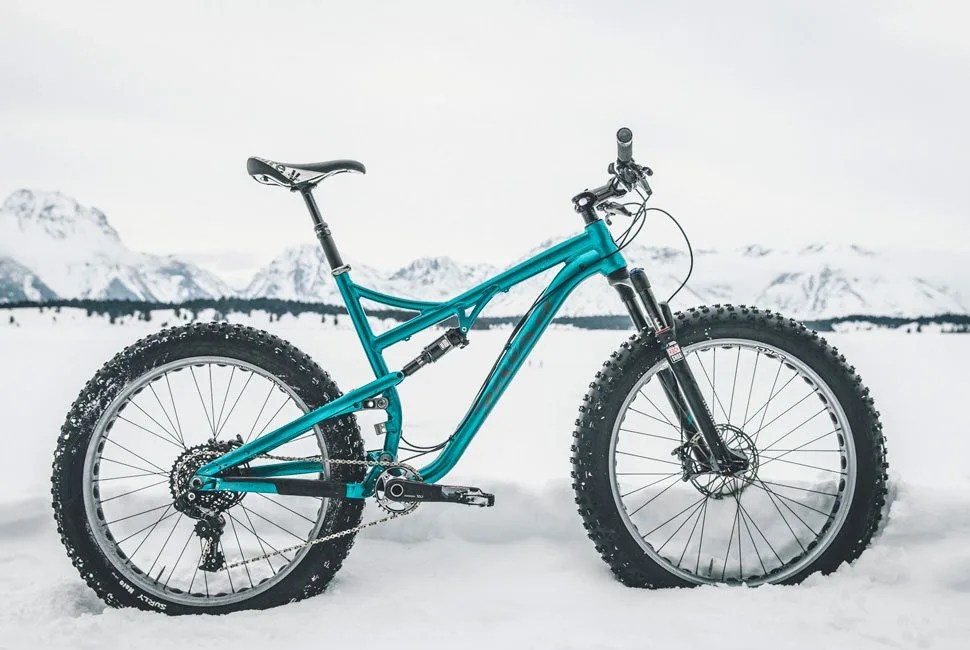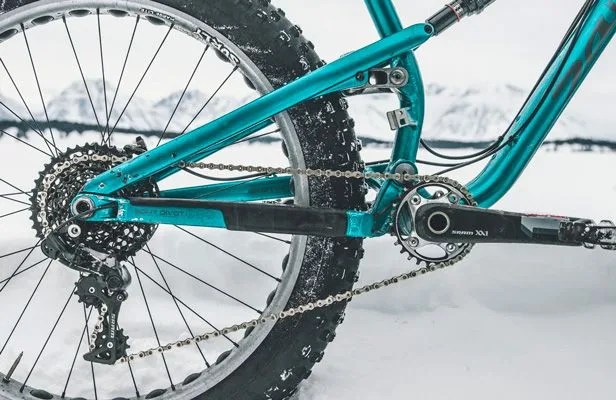After four days in Salt Lake City for the Outdoor Retailer show I took a quick flight north for a more niche meeting of outdoor minds: the 2015 Global Fat Bike Summit & Festival at Snow King Resort in Jackson, WY. As part of the event, major players in the fat bike game — Surly, Salsa and Borealis, among others — had their newest rides on hand to test, and I’d reserved the Salsa Bucksaw 1, the only full suspension fat bike on the market. After a quick tune-up and adjustments for size I threw one leg over the frame and pedaled carefully toward the road, picking up the pace as my confidence increased: these things are much more forgiving than road bikes. Then I rolled off the snow on to Pine Drive and hit a left onto South Millward Street, wiping out immediately.
MORE CYCLING: In Zwift, Cycling Meets Videogame | Best Cycling Routes in CA Wine Country | Best Indoor Cycling Trainer
My riding companion Peter stopped up ahead and looked back over his shoulder.
“You all right?” he said.
“Fine.”
“I went over the handlebars and smashed my glasses this afternoon.”
“I remembered you with glasses”, I said, picking myself up off the icy street. “The big wheels give you a false sense of security.”
Fat bikes are easily identified by their wide tires, which are monstrous — about 3.7-4.8 inches on 50-100mm-wide rims. While there are a handful of other features specific to fat bikes, they’re all built to accommodate fat tires and wheels. The advantages of such big wheels and tires compared to a traditional mountain bike are: (1) better traction on a variety of terrain (except on ice), (2) better float on snow or sand and (3) passive suspension thanks to the variable pressure in the tires. If a zippy triathlon bike is a Bugatti Veyron Super Sport, think of a fat bike as the Mars Rover.
If a zippy TT bike is a Bugatti Veyron Super Sport, think of a fat bike as the Mars Rover.
Fat bikes are built for exploration, and that’s what they’re being used for. Competitors in the Iditarod Trail Invitational follow the legendary trail on fat bikes and there’s a fat bike category at La Ruta de Los Conquistadores (a major coast-to-coast mountain bike stage race in Costa Rica). The Salsa Bucksaw was unveiled at the Sea Otter Classic in 2014. It’s the first fat bike with full suspension (though others are on the way), using the fat bike-specific RockShox Bluto in the front and the RockShox Monarch Rt3 in the rear as one component of the Split Pivot rear suspension system, which is complicated, but amounts to a feat of engineering that allows for consistent suspension independent of the forces exerted by braking and pedaling. Other key features of the Bucksaw include 26-inch wheels, the SRAM 1X drivetrain (see below) and powerful SRAM Guide RS brakes.

